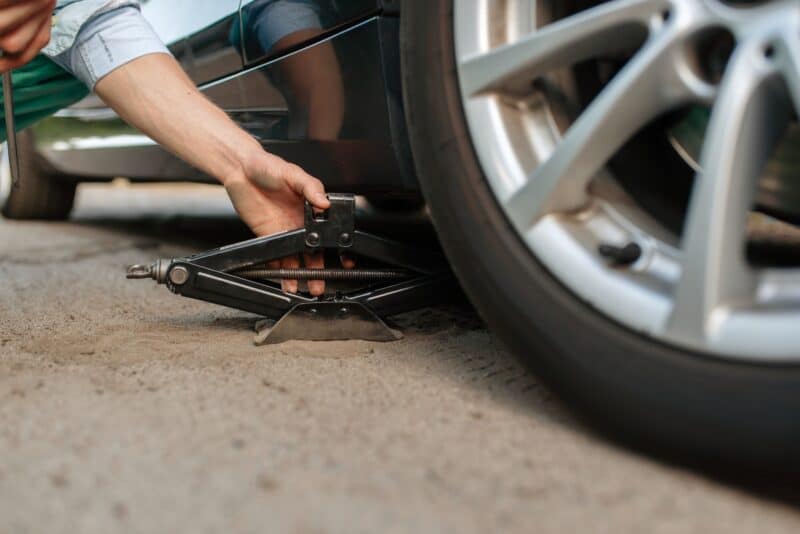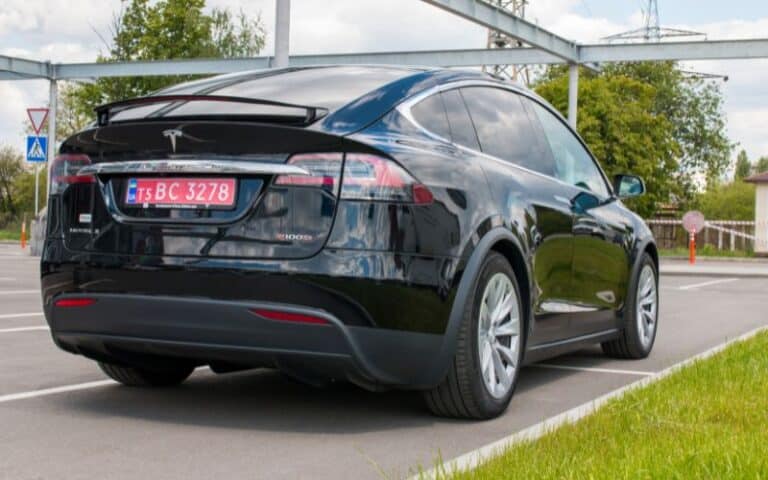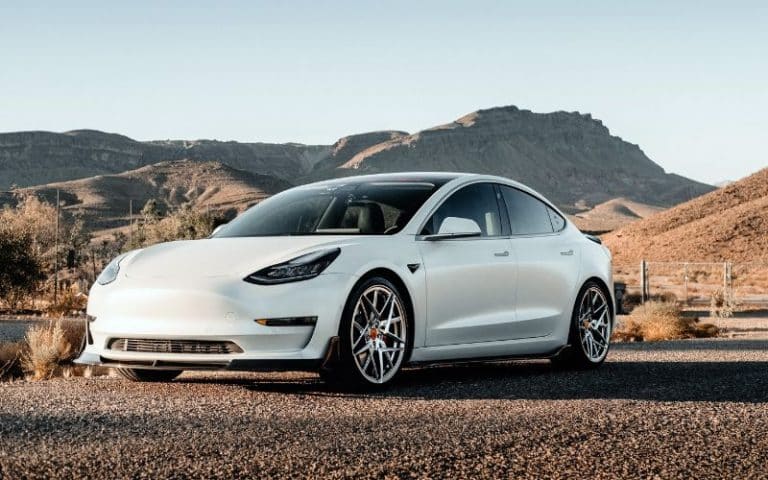Are Tesla Model 3 Tires Run Flat? (Let’s Find Out)
If you are a potential Tesla Model 3 owner, one of the necessary features you should consider for vehicle safety and performance is the tire technology.
However, you might wonder if your Tesla Model 3 possesses run-flat tires, which allow users to drive for a while after the tires have lost air pressure from a puncture.
Also, run-flat tires offer a temporary solution until you can get a replacement. So, let’s find out if Model 3 tires are run-flat.
The Tesla Model 3 does not come with run-flat tires. Though run-flat tires allow you to stay on the road with low pressure in your tires, they provide a slightly stiffer ride and are quite expensive. However, the Tesla Model 3 has a standard regular tire that prioritizes ease of movement and car handling.
In this article, you will learn more about run-flat tires for Tesla Model 3. You will also discover the benefits and cons of using this tire technology.
Does My Tesla Model 3 Have Run Flat Tires?

No, the Tesla Model 3 does not have run-flat tires as a standard feature. However, you can install the tires if they fit your preference.
The run-flat tires consist of reinforced sidewalls that allow the vehicle to continue moving for a certain distance in instances of low air pressure.
On the contrary, the Tesla 3 comes with regular tires, which do not have run-flat features.
However, if Your Tesla tire loses air pressure, you must stop driving to check and replace the tire.
Bearing that in mind, here is a table showing the pros and cons of Run-flat Tires for Tesla Model 3
| Pros of Run-flat Tires | Cons of Run-flat Tires |
|---|---|
| Temporary mobility after tire loss | Higher tire cost |
| Enhanced safety in case of punctures | Potentially stiffer ride |
| Reduced need for an immediate tire change | Limited availability and options |
| Peace of mind for long-distance driving | It may require specialized equipment for repair |
However, you should note that the tire specification can vary depending on the model in question, trim level, and the tire features you selected.
Though the Tesla Model 3 comes with regular tires instead of run-flat tires, it comes with a Tire Pressure Monitoring System (TPMS).
The TPMS functions as a tire monitor, which ensures the tire is at the right pressure and notifies you of any pressure drop.
Once the monitoring system alerts you of any significant tire pressure reduction, you can act immediately to address the tire issue.
However, it is advisable always to have spare tires and tire repair kits available to handle such situations effectively.
Though the Tesla Model 3 does not come with a run-flat tire, you can opt for aftermarket options.
Moreover, consult a tire specialist to ensure the compatibility and safety of the vehicle’s tires.
Why Does Tesla Not Have Run Flat Tires?
Tesla vehicles, including the Model 3, do not have run-flat tires because the tires can negatively impact the vehicle’s range and efficiency.
Run-flat tires tend to have thicker sidewalls and more weight. These features reduce the speed and efficiency of the Tesla vehicle.
To counter the absence of run-flat tires, Tesla vehicles have a built-in tire pressure monitoring system that informs the driver when the tire pressure is reducing.
This feature acts as a quick warning signal allowing you to address tire issues promptly.
Below are more reasons Tesla does not have run-flat tires in their vehicles:
#1. Range and Efficiency
Run-flat tires are quite heavier than regular tires due to their reinforced construction.
The extra weight negatively affects the vehicle’s energy efficiency and lowers the driving range.
Moreover, Tesla focuses on maximizing the electric range of its cars and using lighter tires to help achieve a fast and efficient driving experience.
#2. Ride Comfort and Handling
Unlike regular tires, run-flat tires have stiffer sidewalls, which can result in rougher ride quality and compromise handling features.
Tesla also prioritizes a smooth and comfortable driving experience for its consumer market; therefore, utilizing conventional tires allows for better handling dynamics and comfort.
#3. Availability and Repair
Unlike regular tires, run-flat tires are not as available, which is a challenge regarding accessibility and easy repair.
If your run-flat tire needs replacement, finding a replacement that fits the vehicle’s tire specification might be difficult.
#4. Tire Performance and Safety
Run-flat tires allow you to drive even with low pressure. However, in some situations, its limited driving distance in a deflated state (about 50 miles) may not be enough.
Safety is essential when driving; therefore, Tesla recommends pulling over and contacting roadside assistance instead of driving on a punctured tire in a tire failure situation.
#5. Tire Pressure Monitoring System (TPMS)
Tesla vehicles are popular for their advanced features. One of these features is the Tire Pressure Monitoring System (TPMS) which alerts drivers of low tire pressure.
The monitoring system offers an early notification to promptly address the tire pressure issue, reducing the need for run-flat tires.
However, if you still prefer the convenience of run-flat tires, consult a professional and consider their availability before deciding.
What Kind of Tires Does Tesla Model 3 Come With?
The Tesla Model 3 comes with standard all-season tires, generally for providing all-around use, balance, durability, and comfort.
The specific tire, however, can vary depending on the trim level, region, and date of manufacture.
Additionally, Tesla has collaborated with various tire manufacturers, including Michelin, Firestone, and Hankook, to provide suitable tires for different driving conditions.
Moreover, the tires that Tesla fits into their Model 3 are generally high-quality and provide efficiency and traction.
These tires are optimized for electric cars (EVs) and incorporate factors like low rolling resistance to optimize the vehicle’s range.
Though the vehicle does not come with run-flat tires as standard features, your options could vary depending on your preference and the availability of the tires.
As a Tesla owner, you also have the flexibility to select and install tires according to your needs, including opting for run-flat tires.
However, you must confirm the tires’ availability and compatibility with your Tesla Model 3 specifications.
Regardless of the type of tire you use, regular maintenance and tire pressure monitoring will ensure optimum performance, safety, and efficiency.
You should also note that tire options are often subject to updates and changes by Tesla over time.
Therefore, refer to the Tesla website, vehicle documentation, or a Tesla representative to obtain up-to-date information on the tire options available for Model 3.
Does a Tesla Model 3 Need Special Tires?
Yes, the Tesla Model 3, like any other vehicle, requires specific tires due to its unique features and performance specifications.
Though the Model 3 does not necessarily require “special” or exclusive tires, various considerations are vital for selecting tires for the electric vehicle.
Here are some of the necessary considerations:
#1. Low Rolling Resistance
Tesla emphasizes the energy efficiency of its vehicles, and one way they enhance their vehicles’ efficiency is with low-resistance tires.
These tires lower the energy required to roll, resulting in an improved electric range for the Tesla Model 3.
#2. Tire Size and Rating
The owner’s manual indicates that Tesla Model 3 has tire size specifications. It is advisable to adhere to tire size recommendations to ensure driving safety.
In addition, adhering to the owner’s manual also ensures proper handling and fitment. The tires’ size also affects the vehicle’s movement and comfort.
Therefore, the tire’s load rating also plays an important role in keeping the vehicle balanced.
The tires’ load rating should also be of the same or a heavier weight as the vehicle.
Here are some of the recommended tire sizes for your Tesla Model 3:
- 235/45R18
- 235/40R19
- 235/35R20
#3. Electric Vehicle (EV) Considerations
Most Tesla vehicles, including the Model 3, are Electric Vehicles (EVs). These vehicles have unique characteristics that affect tire selection.
EVs usually have a heavier curb weight due to the battery pack weight, which can cause tire wear, energy efficiency, and traction.
Therefore, you should select tires that can handle an electric car’s torque and weight features.
#4. All-Season or Winter Tires
This factor depends on your location and the driving conditions; you must consider using the all-season or winter tires for your Tesla Model 3.
All-season tires provide high performance in various weather conditions, while winter tires give you enhanced balance, traction, and control in snowy conditions.
Assess your driving area and select the tires suitable for your area’s current weather conditions.
#5. Maintenance and Rotation
Proper care and maintenance of any vehicle are essential, including your Model 3.
In addition, regularly check the tire pressure, rotate the tires at intervals, and properly align and balance the tires to ensure optimal comfort and performance.
Moreover, you can also follow the guidelines on your owner’s manual for tire maintenance to obtain the maximum tire lifespan and vehicle performance.
Ultimately, considering the above factors will help you determine the specific tires you require for your Tesla Model 3.
You can also seek professional advice and choose reputable tire brands to help you make an informed decision on tire selection for your electric vehicle.






